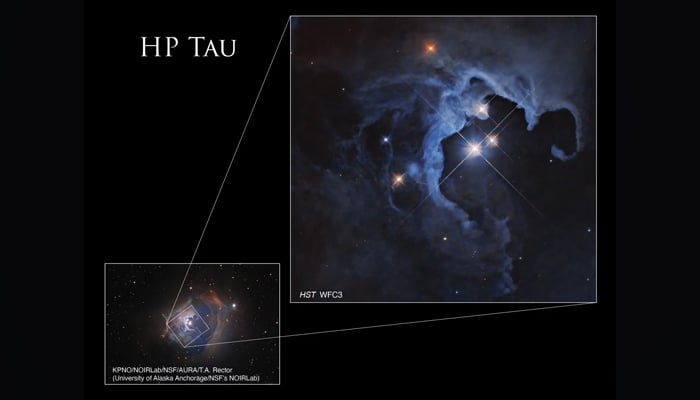Hubble Telescope captures images of new-born stars
Amazing telescope brings new data from hundreds of lightyears away
May 19, 2024

Astronomers have discovered three young stars that are currently in the process of formation, using Nasa’s Hubble Space Telescope, suggesting how sun looked like in its early days.
The picture shows a reflection nebula in which the young trio, HP Tau, HP Tau G2, and HP Tau G3, is shining.
According to the explanation, HP Tau is on the top of the three, which is also called T Tauri star. It has a variable brightness. It can be observed by its changing luminosity.
In a statement, Nasa wrote: "T Tauri stars are known to have both periodic and random fluctuations in brightness."

It added: "The random variations may be due to the chaotic nature of a developing young star, such as instabilities in the accretion disk of dust and gas around the star, material from that disk falling onto the star and being consumed, and flares on the star’s surface."
Forbes reported that these stars are over 10 million years old, as they can be seen covered in clouds of gas and dust from which they are formed.
Reflection nebulae do not have light of their own to show themselves but their luminosity comes from the objects nearby or around it such as the gas and dust that emit brightness.
HP Tau is roughly at the distance of 550 light-years in Taurus the constellation. e.
"Hubble studied HP Tau as part of an investigation into protoplanetary disks, the disks of material around stars that coalesce into planets over millions of years," the US space agency said.









